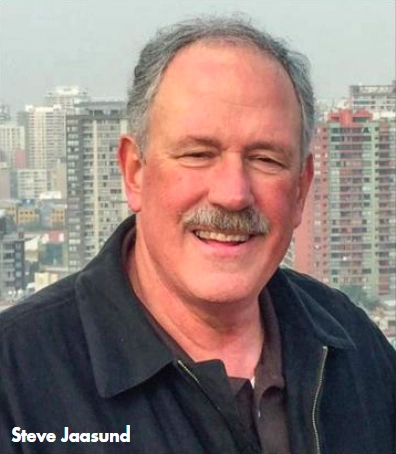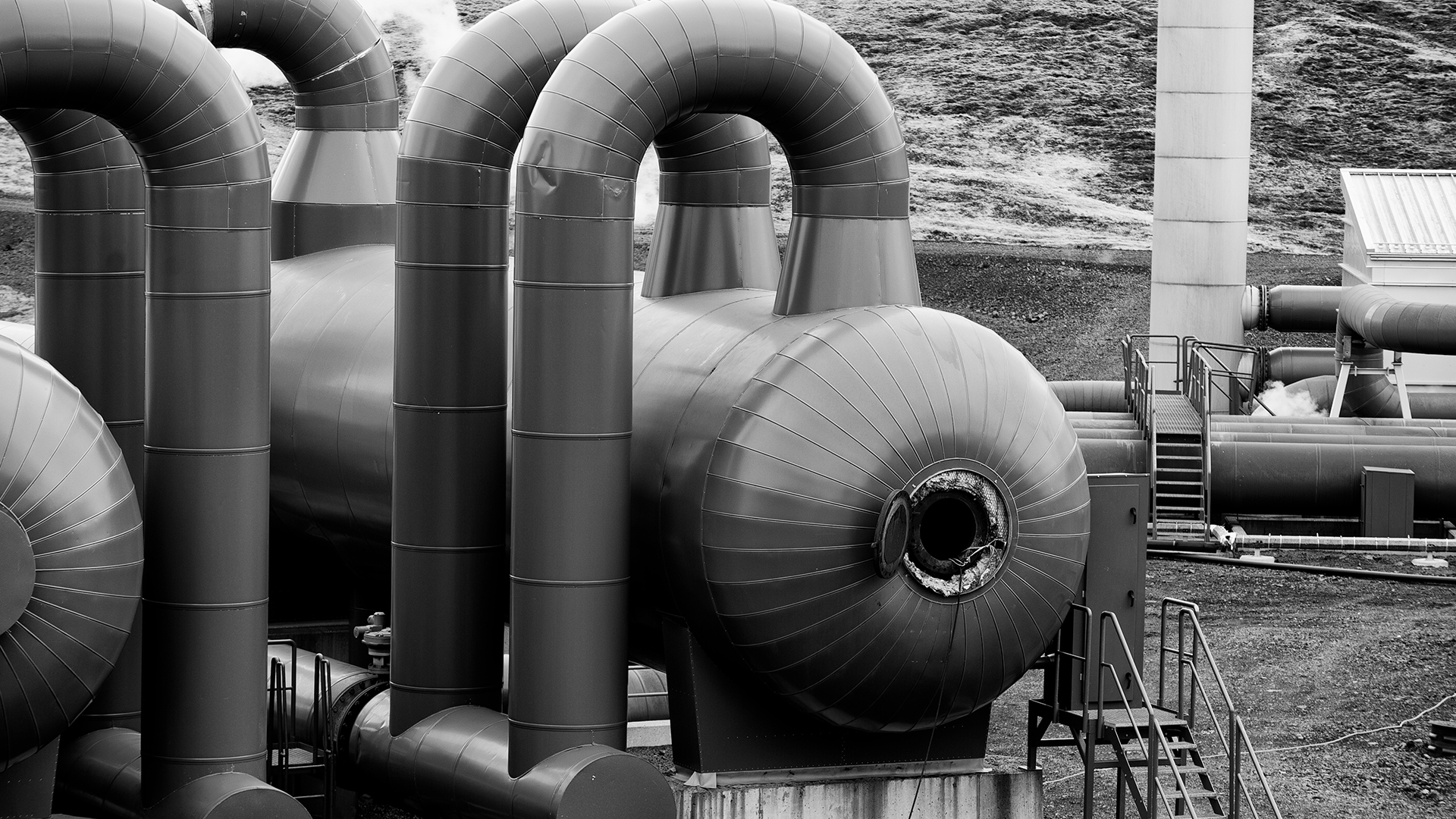JAASUND’S LONG RUN WITH GEOENERGY (LDX SOLUTIONS) ISN’T OVER.
EDITOR’S NOTE: One of the first air emission control companies to advertise in Panel World magazine was Geoenergy®, and one of its co-owners was Steve Jaasund, who today is Geoenergy Products Manager for LDX Solutions. The life and times of Geoenergy and Jaasund have been well documented through the years in Panel World. Further development in recent years prompted the following question and answer exchange. Jaasund can be reached at sjaasund@ldxsolutions.com

Panel World: The dust seems to have settled on the transition into LDX Solutions. Interestingly, the Geoenergy name survives, even in your title as Geoenergy Products Manager. Given that at one point you were the co-owner of Geoenergy, can you reflect on what Geoenergy has meant to you personally and professionally?
Jaasund: That’s a big question and very relevant to me on both fronts. My impression is that the names Geoenergy and Steve Jaasund are inexorably linked and rightfully so. Briefly stated, all things Geoenergy have been the central focus of my professional career for roughly 35 years.
In 1984 I left the corporate world and went out on my own as a consultant. While consulting was challenging and fun, my real passion was in the world of air pollution control equipment and specifically wet ESPs. So when a consulting job with fledgling Geoenergy International Corporation came up, I had an ideal entre into the world of capital equipment supply. In those days Geo was a three-man operation with one E-Tube® wet ESP on their reference list. To be successful the company desperately needed a change of ownership with a more go-go attitude. In reaction, two of my old friends from the University of Washington and I struck a deal with the Geoenergy owners to buy the company with sweat equity. It was a good deal for both parties and ultimately very successful for me and my partners. Starting in 1988 we grew the company from that three-man operation to a real force in the industrial air pollution control market with a special emphasis on the world of panelboard. In fact, I think it’s safe to say that by the year 2000 Geoenergy was the leader in emission control in the North American panelboard industry and a very significant supplier of emission control systems in many other industries.
However, the situation changed dramatically in 2002 when the company lost an employment contract lawsuit brought by a former employee. That forced us to close the company and declare bankruptcy. That was a very dark time for me and my family, costing nearly everything I owned. All I could hold onto was my knowledge, experience and my association with the name Geoenergy.
Fortunately, that knowledge, experience and Geoenergy association appealed to A. H. Lundberg Associates here in the Seattle area, and late in 2002 Lundberg purchased the intellectual property rights of Geoenergy from the bankruptcy trustee and hired me and my former partner Gary Raemhild. With that, Geoenergy was resurrected from the grave and a fresh start began.
Now, 17 years later the name Geoenergy continues to be a force in the market for emission control technology with a continuing focus on panelboard and related wood bioenergy industries. While the closure of Geoenergy International Corporation was a traumatic event, I think that today the name Geoenergy and the products and markets that go along with it are even stronger than they ever were. And it has been my great fortune to be associated with it. As they say, Geoenergy has meant the world to me.
Panel World: LDX Solutions combines several air emission control companies. Can you review how the transformation evolved in recent years?
Jaasund: LDX is the new name for the combination of Lundberg and Dustex. Here’s how this happened:
In 2015 Dustex in Kennesaw, Georgia was acquired by a private equity firm. About a year later Lundberg was also acquired. At that point the two companies were merged under the umbrella company, Dustex Holdings. The intent of this acquisition was to develop a broad-based supplier of emission control products for the industrial market. Given the dry treatment technologies at Dustex such as fabric filters, circulating dry scrubbers and dry sorbent injection systems and the Geoenergy wet ESP and RTO technology at the Lundburg office the new combined firm covered most of the bases. Most recently, the owners decided to put the new name, LDX Solutions, on the entire operation to give a clear message to the market that the two companies are now, indeed, the same company. This is not just a name change. Despite our different heritages and geographical locations we work together as a team on any and all projects.
Panel World: What is LDX Solutions bringing to the panel industry that may have been lacking, especially in product technologies?
Jaasund: It’s simple. There is always the need for higher efficiency, lower opex and lower capex. The wet ESP, RTO and scrubbing technologies of 1990s, while acceptable in those days, are not acceptable in today’s world. My colleagues and I have seen great improvement in the emission control technologies over the past decades and there is more to come. As a company this drive for better performance and lower costs is very real to us and there is a lot of R&D going on to achieve these goals. Tangible examples of these include smaller, more energy efficient RTOs that perform at 97% thermal efficiency and >99% DRE and wet ESPs that routinely achieve less than 10mg/Nm3. Improvements such as these directly translate into lower cost and higher reliability for a wide variety of manufacturing operations.
Panel World: How much advancement does there continue to be in air emission control technologies and what is driving this continuous improvement?
Jaasund: Throughout my career, I have seen that the demand for a cleaner environment has no limit. As long as the possibility of further emission reduction exists the public will demand it. This demand is reflected in regulatory mandates and drives companies like LDX Solutions to strive for the better performing products that I just mentioned. This then begs the question, just how far can we go? In today’s world of <10 mg/Nm3 particulate requirements and 1 ppm HAP demands, one might think that we have reached a practical limit. Well, from my point of view, based on my experience, we’re not even close to that limit. For me, when the gas stream coming out of a wood dryer is cleaner than the US EPA ambient air quality standard, then, and only then, can you say that we have reached a practical limit.
Panel World: Where do we stand with regard to EPA and government-body regulations and standards of air quality that impact the panel industry? Are there issues still pending?
Jaasund: Certainly there are issues still pending. The driver, of course, is the Clean Air Act, its amendments and future amendments. As time rolls on I am sure that restrictions on emissions will tighten and formally unregulated emission sources will be regulated. While the political leanings of the party in the White House matter, in my opinion they only matter on the margins. As I said before, the demand for cleaner air is insatiable and industries like the panel industry need to plan on tighter and tighter regulations in the future. Fortunately companies like LDX Solutions are working hard on developing technological innovations to satisfy these coming demands.
Panel World: What do you feel are some of the keys to a panel plant implementing and maintaining an excellent air control program?
Jaasund: It starts with taking environmental compliance seriously. Gone are the days when operators might thumb their noses at the local air pollution agency guy. Regulatory compliance is a very serious business and should be treated that way from the worker on the shop floor all the way up to the CEO. Fortunately, today’s generation of young people think that way and are virtually all very serious about obeying the rules.
If there is a weakness in this regard, I think that there may be a lack of skilled engineers and technical people out in the plants to ensure that emission control systems perform as required. I am not saying that this is a universal problem, but that the panel industry along with other process industries could use more chemical, mechanical and electrical engineers to watch over and maintain their emission controls. As compliance demands grow and the control technologies become more sophisticated it is important that there are people at the helm who understand how these things works. Unfortunately, many plants simply do not have the technical talent to understand their emission control systems efficiently despite a willingness to play by the rules.
Sources

